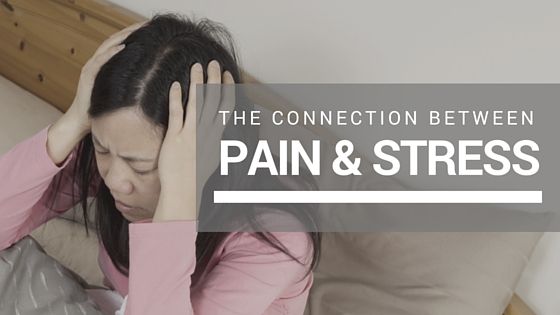Blog
The Connection Between Pain and Stress

Stress can hurt. It can cause real, physical pain.
Studies show that depression and anxiety can lower your pain threshold, potentially making minor aches and pains into major problems. If you’ve ever noticed your back pain getting worse when your job gets more stressful, you’ve seen this first hand. On top of that, a common symptom of mood and anxiety disorders is something called somatization, a phenomenon where the body produces physical symptoms (pain, stiffness, digestive problems) as a manifestation of stress.
This is very different from saying that your pain is “all in your head.” The pain is real, and it’s not something that you can just ignore, or think your way out of. Rather, it’s a case where resolving your pain will also require you to deal with the psychological factors that are causing or exacerbating it.
By the same token, pain can also cause mood and anxiety problems. People with chronic pain are more likely to suffer from depression, and pain can change how we deal with stress. If your low back won’t stop complaining, you may find it harder to deal with the daily stressors that you used to be able to handle.
So, which came first? The stress, or the pain? This is a difficult question to answer. And usually, the answer doesn’t matter. The good news is that dealing with one WILL help with the other.
Reducing your stress levels is an excellent way of addressing chronic pain. Getting your pain under control is a great way of reducing your stress.
The first step is to talk to a medical professional. If you’ve got pain that won’t ease up, schedule an appointment with a physician. They can run diagnostic tests and refer you to relevant specialists, and they may have a treatment that can get you out of pain in short order. If you’ve got more stress than you can handle, or if you’ve been in a funk that just won’t lift, going to see a talk therapist (licensed mental health counselor, licensed social worker, or psychologist) can help.
Outside of that, there are activities that studies have shown to be beneficial for both pain and stress. Light-to-moderate physical activity can be beneficial for many pain disorders, as well as being very effective for a wide variety of mood and anxiety disorders. Yoga and meditation both have many positive studies under their belts as well.
And of course, I’ve got to mention massage 🙂 Research has shown regular massage to be beneficial for many pain conditions, including arthritis, chronic low back pain, headache, and fibromyalgia. It has also proven to be effective for both depression and anxiety, demonstrating immediate and long-term benefits (even after discontinuing the regimen!).
Be kind to yourself. I know that talking about stress, anxiety, and depression can be hard, but it’s worth exploring. There are professionals that can help, and I think that a massage regimen can offer an excellent complement to their treatments. You can schedule a massage right here. Or feel free to call or email me if you need some ideas for other resources.
